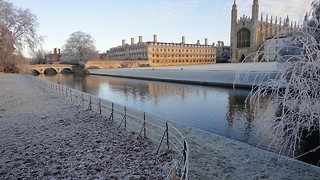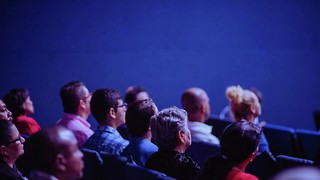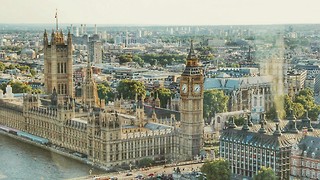Long Read: Poland’s artistic blossoming, and Cambridge’s comfortable stagnation
Poland’s troubled past and contemporary art scene showed me that Cambridge students ought to start reflecting on their cultural comfort and historical fixity, argues Jon Cooper
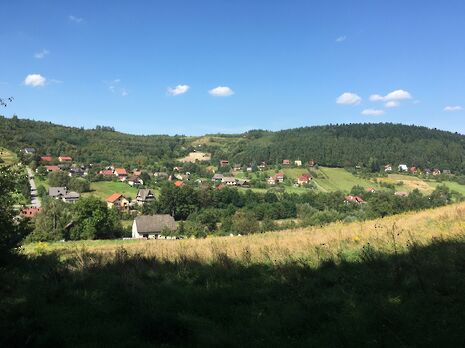
As a History student who has mostly studied early modernity (that is, being primarily concerned with kings, queens, the establishment of the rule of law, and changing attitudes to theories of knowledge and governance), I don’t tend to see the machinations of modern industrial societies as natural. Urban spaces are vastly complex; modern industrial and post-industrial governments and democratic forces are unwieldy and unstable caprices – peace, organisation and prosperity lie precariously upon humans’ naturally lawless propensity for chaos and disruption.
If young British people, growing up in a relatively peaceful, intricately-constructed and stable society, are prone to forgetting that social and environmental human structures are malleable and by no means permanent, memory yields different conclusions for former Soviet states – not least for Poland, on the stomping ground between Axis and Allies during World War Two. After doing some thinking about the anti-Semitism that had been debated during the NUS referendum in Easter term, I wanted to find out something about my own ancestral links to the Holocaust and the persecution of Jews in Poland.
Sometimes upon travelling, our ambition to ‘broaden our horizons’ sinks into that Western, individualist notion of ‘finding ourselves.’ A sort of personal pilgrimage to discover the ‘self’, a conception of personality that we rarely remember is at least partially an idiom of US-European modernity. Sometimes travelling does something very different: rather than handing personal growth on an exotic platter, remote from beige parochialism, it can teach us to critically reflect on what we take for granted. In my case, those beige edifices and architectural relics of a Gothic past, housing that culturally-contingent educational elitism I’ve become so comfortable with, became a surprising object of reflection against my original intention.
I: A changing Poland
On my first day in Warsaw, I visited the Muzeum Powstania Warszawskiego, which commemorates the Warsaw Uprising in 1944. At the beginning of August that year, as Nazi Germany appeared on the wane from Allied forces and began to recruit able-bodied Poles for mass fortification, the Polish Home Army declared the beginning of the revolt against Nazi control. By January of the following year, 85 per cent of the buildings in Warsaw had been destroyed; Heinrich Himmler had mostly realised his vision of seeing Warsaw “completely disappear from the surface of the earth”.
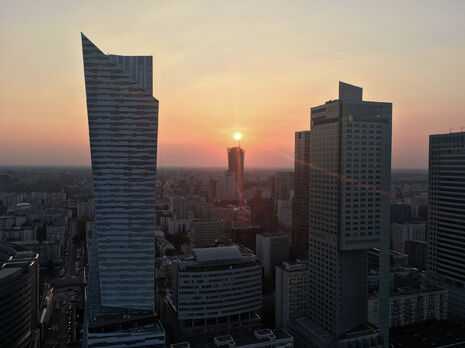
Walking through the museum’s exhibits, you are confronted with the gowns of Polish patients massacred by SS forces as hospitals were invaded, images of corpses and bodies burning alive, postcards and quotations from those who saw their own children shot and killed. The human effects of combining hateful ideological force with the industrial power of a modern state are rendered unembellished – unmistakeable in destruction.
Of course, Nazi militarism and the pummelling of Warsaw seventy years ago hardly accords with Poland today: freed from Soviet Union governance in 1989, the Third Polish Republic has since seen liberalising and democratic reforms, joining the European Union in 2004, and is now one of Europe’s fastest growing economies. Warsaw is covered in skyscrapers, embracing a Parisian ambience along its Vistula River; it is, emphatically, a modern European capital. Hitler failed, Western liberalism triumphed and prosperity followed. The story, if not pervasively teleological, is perhaps over-told.
Modern societies’ grand narratives of political, military and economic change, the temporally-tidy epochs of regimes or dictators, in large, obfuscate their foundations. That is, the shared meanings, understandings and values that underlie a community. All-encompassing world-views like Nazism, Catholicism, or the Romantic throws of nationalism, have become rapidly fragmented as the twentieth century has passed – not least in response to their failures. Instead, we are confronted with a situation expressed in some well-worn verbal signatures: postmodernism, post-industrialisation, secularisation and globalisation. Poland, like most of Europe, is feeling this change.
Economies and technology are more complex, but societies increasingly lack the conceptual means to hold a people together; the sanction of a divine deity to justify the power of monarchs has been eschewed, the economic structuralism of Marxism-Leninism capitulated, the allegorical power of the fictional ‘nation’ continually, if stumblingly, eroding. Politics in the late twentieth and early twenty-first century has increasingly been concerned with dismantling those structures of embedded class, racism, sexism and homophobia – those apparently ‘rightful’ hierarchies of power that delineate groups between each other.
Poland, like other Western democracies, still struggles with dismantling such ingrained attitudes; the process is ongoing, and non-linear; it stops, and stalls, yet is so far patently discernible. Those most concerned with dismantling the subterranean structures of the past are the young, who have grown up most alienated from its lingering vestiges. We see it not least in Cambridge student politics: the aversion to the isolationist nationalism of Brexit, the post-colonialist retreat from embedded racial norms in language and the reflexive shift of gender and sexual politics.
Poland has experienced concomitant post-structuralist and postmodernist cultural shifts, but in an entirely different circumstance; in an 88 per cent Catholic, conservative country, the progressive youth culture of thriving metropolises such as Warsaw, Wroclaw or Katowice battle larger ideological forces. Poland’s ruling Law and Justice party, closely tied with the Catholic Church, opposes abortion even in cases of rape or incest. Polish President Andrzej Duda, when speaking of LGBT+ rights, said: “matters that are vital for society are not dealt with while others, undoubtedly connected with the leftist ideology, are being pushed forward. They are, in my view, destroying the traditional family which, since the dawn of mankind, has assured its development and endurance.”

After a Law and Justice landslide in the 2015 elections, 62 per cent of seats in the Sejm (the lower house of parliament) are shared with Civic Platform (another socially conservative Christian party). While there is a growing front of opposition against Law and Justice, the United Left coalition of left-wing political parties still holds fewer seats than Kukiz'15 – a populist right-wing party, founded by punk rock musician Paweł Kukiz, that secured 42 per cent of the 18-29-year-old vote in the Presidential elections of last year.
Polish politics, just like the UK’s, is concerned with balancing the economic machinations of twenty-first century free markets and public services with social cohesion and democratic legitimacy. Its battle lines are broadly similar, if different in balance and depth of persuasion: ethnocentric, Christian value-based conservatism heralding ‘natural’ structures to be maintained against post-structural conceptions of some form of equality in human essence, with an emphasis on identity and personhood. Just like young city dwellers in the UK, the people around my age that I met in Krakow and Warsaw leaned to the latter category. Except they didn’t have the comfortable position of being the average Cambridge undergraduate, gazing at the world through stained-glass windows; they lived in a state of more rapid change, more prone to its unpredictable impact, with a greater urgency of self-reflection.
II: Polish contemporary art and reflection
It ought now be re-emphasised that what ultimately underlies political attitudes and systems are the values and attitudes of people; just as Nazism and nationalism depend on hidden or rightful orders in nature to be deduced and realised, twenty-first century democratic forces are increasingly influenced by post-structural conceptions of reality. That post-structuralism is perhaps understood most familiarly as those university-educated middle class yuppies gentrifying Shoreditch and Brixton, who enthusiastically discover omnipresent ‘social constructions’ in well-trimmed beards. This is, of course, a pastiche, but it’s hard to argue against: most young urban people, whether they knew it not, are post-structuralists, rejecting any inherent or moral dominance in hierarchy and systems of social order, and accepting the reality that surrounds us as constructed by social forces ultimately reducible to human neurology. To these ends, the young end up deeply oppositional to the Catholic political hegemony that controls Poland, who see that their work must be compatible with His glorification.
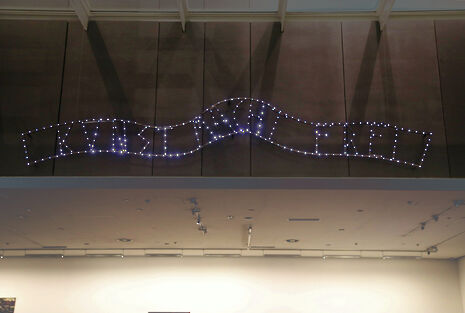
Duchamp’s 1917 Fountain was one of the most influential pieces of twentieth-century artwork, instituting conceptual art as a means to question the nature of apparently innate structures, with a stated aim to transform artistic expression away from craftwork and aesthetics to intellectual interpretation. Brian Eno, a celebrated experimental electronic musician, described his success in 1993 when he managed to insert a vial of his urine into the piece. Conceptual artwork, moving away from the innate and embracing the flexibility of interpretation, finds itself some distance away from the socialist realism of the Soviet Union, more still the real presence of the body of Christ in sacramental bread.
Since the 1960s, modern art has done a great deal of work in attempting to disentangle image from intrinsic meaning; not least as a reaction against all-encompassing ideologies. Postmodernism, so entangled with post-structuralism, treats images as artefacts. Created and not inherent, Baudrillard warns us that their mass existence in the form of simulacra create a sort of fictional existence: magazines about relationships between soap opera characters, or Italian restaurants in the Peak District. If Britain, America and France did much of the intellectual work of postmodernism in the late twentieth century, it was at least partially due to the more hospitable conditions of their liberal democracies. Polish historian of ideas Leszek Kołakowski emigrated from communist pressures to Oxford, while satirical writer Stanisław Lem was forced to insert references to the “glorious future of communism” in order to pass Stalinist censors.
Since 1990, Poland has undergone many of the transformations that catalysed the development of this fragmented conception of reality in the West. Young people in Poland have grown up with globalisation, economic complexity, market-driven consumption habits and technology’s yielding of mass, instant communication networks. Like their Western counterparts before them, they are taking to the arts to express new conceptions and criticisms of their realities. In doing so, just like Duchamp, Richard Hamilton or Tracey Emin, they critically question the institutions and images that form their collective existence, radically questioning the meaning of those identities their parents might have taken for granted.
The contemporary art scene in Poland has grown quite considerably since the fall of communism. Renowned Polish modern artist Edward Krasinski used to exhibit his works behind closed doors on his 11th floor flat on Solidarność Ave, near a destroyed ghetto in Warsaw. The same apartment is now maintained by the Foksal Gallery Foundation, and has been left in the same condition since his death in 2004. It was that same year that the director of the Centre for Contemporary Art Ujazdowski Castle in Warsaw, Małgorzata Ludwisiak, heralds as changing Polish art forever: “My grandfather was in Warsaw during the uprising, and we grew up with his stories. Our history is a burden, but since we joined the European Union, the world has opened up to us.”
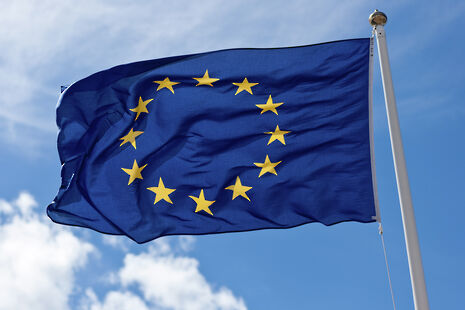
Two days after visiting the Muzeum Powstania Warszawskiego, highlighting the totalitarian and world-consuming ideologies of the mid twentieth century, I engaged in contemporary reflections on an artificially constructed reality at the Zachęta National Gallery of Art. Visual artefacts, presented in physical space, corresponding to the huge transformations in thought and structures that had shaken the world in the 70 years between the periods of time they sought to represent; for me they now existed only a 30 minute walk apart. If the cloisters of my college are older, they are certainly less striking.
During Soviet times known as the Central Bureau for Art Exhibitions, the neoclassical façade of Zachęta clashes with its overtly contemporary inners; the white-washed walls with jet black Battersea typeface conjured Oslo over Moscow. It is a gallery with a stated aim to support young artists – the same people most urgently confronted with change and transformation. When I visited, the largest exhibition was entitled Money to Burn, which considered Poland’s cultural shift to a capitalist economy since 1989. The curation asks: “Did the post-1989 transformation and the arrival of the free market change thinking about wealth, and if so, how? What did the 2000s bring with their adaptation of Western ways? What does #moneytoburn actually mean today?”
Installations ranged from criticising money as an artefact, juxtaposing different national currencies’ paper notes upon another to create contortions and disturbing features in nationally symbolic faces intended to confer trust and legitimacy, to looping 3D animations of burning gold bars. Perhaps the most striking, with memories of completing my Part I Historical Tripos still in mind, was Gregor Różański’s What About You, Poor People? (2016). Four or five smashed Moët & Chandon champagne bottles lay on the ground of the exhibition room, protectively guarded by unfriendly-looking gallery security.
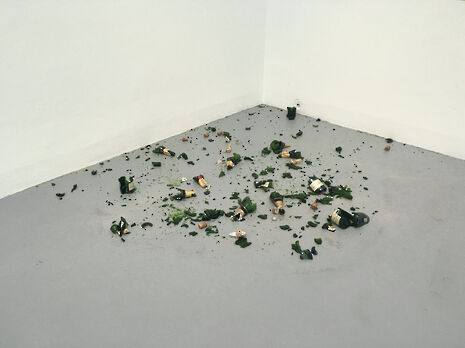
A quote from the artist next to the exhibit read: “the act of destroying things which are considered valuable has the magic of decadence, a disturbing feeling of pleasure based on the liberation from moral constraints and habits… a provocative aspect”.
This, maybe the most obvious entry point to doing so, was when I began to think critically about my time at Cambridge – how it altered my perspective on the world, the embedded cultural understandings I had unconsciously taken on, and how I was being less critical than I would be if I lived in different conditions. Polish history in many ways offers more opportunity for radical criticism (Zbigniew Libera’s Lego Concentration Camp is a case in point); its more conservative political and cultural climate render the post-structuralist notions of contemporary art even more striking and provocative. But these distinctions nevertheless offered opportunity for me to consider the kinds of things we fail to be reflective about.
III: Cambridge's own poststructuralism
The famous Cambridge Tudor historian Geoffrey Elton (known for his stringently-defended traditional methodology), who taught David Starkey, described postmodernism as the “intellectual equivalent” of crack. “We are fighting for the lives of innocent young people beset by devilish tempters who claim to offer higher forms of thought and deeper truths and insights – the intellectual equivalent of crack, in fact. Any acceptance of these theories – even the most gentle or modest bow in their direction – can prove fatal.”
In our prestigious conglomerate of medieval colleges, situated in a thriving and deeply liberal English city, we are now committed to the throws of post-structuralism: from Wittgenstein’s linguistic turn to post-colonial debates about remembering the legacies of empire and our own legacy of Eurocentric culture. While post-structualism has fully beset academia in the last thirty or forty years, it is – as usual – most apparent in the young. Discussions that seek to discern the fundamental and ‘hidden’ structures of our social lives permeate from weekly essays to rowdy college bar debates, with Cambridge student politics a particular locus of discussion. Debates from gender neutral toilets to ‘Rhodes Must Fall’ all exist within this paradigm.
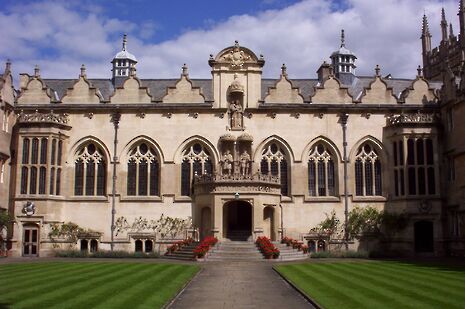
Yet one of the most interesting facets of this kind of discourse at Cambridge is its external, rather than internal, gaze. While some debate the decadent symbols of elitism of Formal Hall, gowns and May Balls, shifting the focus from twenty-first century global issues to our hallowed halls, we rarely critically reflect on the subtler conceptions of ourselves that constitute our moral ontologies and professed purposes here. How many students complaining about work critically consider their linear conception of educational and social success? How many activists consider the earned nature of their democratic freedoms? How many students consider the rightful direction of their intellectual energies? Perhaps most poignantly, we hardly consider the impact of our participation in living inside this ‘bubble’ on our conception of self. It’s worth asking what we mean when we say ‘we’.
We are a deeply culturally embedded people, continually concerned with the external, but rarely concerned with what is amiss or distinct in ourselves. Meaning is conferred onto our lives almost without effort. The seeming purposefulness of after-school piano lessons, collegiate sport team-building and the grandeur of medieval architecture; an esteemed university according to international league tables, attended primarily by individuals in secure familial and social environments; the complexity and intricateness of the constructions that furnish our existence almost serve to obscure it as constructed, still less prone to destabilisation.
Cambridge’s most dramatic long-term transformation has been from devoted monastics’ pious study to middle-class academics’ intellectual satisfaction, equipped with new theoretical paradigms but dressed in the same uniforms and seated in the same halls; even in the same tables and chairs. Yet continuity runs through the ranks: in most youth cultures, nightlife offers unique avenues for cultural expression or liberation; it constantly changes, experiments with new forms, renders dynamic forms of expression. In Cambridge you might go to Formal Hall, sit in those same chairs, before deciding between those few short-hand simulacra that denote no more than in-jest verbal symbols for a chaotic and conformist way to pass the time: ‘Wednesday Life’, ‘Friday Cindies’. This is, in some way, a continuation of our medieval chronology of celebrated continuity. We don’t personally reflect; we conform – successfully coexisting and failing to criticise.
We call it a ‘bubble’, but tradition yields more of a mask; we are withdrawn from industrial and post-industrial change, the deeper effects of social and economic transformations; cushioned by an intellectual environment we assume has some kind of innate, historical purpose. While this exists in different ways for different individuals, we mostly follow the same trajectories and uncritically participate in a wholly contingent system. We exist in the same way as before, occasionally looking outside with different lenses. Our modus operandi of decoding the subterranean, practicing the post-structural, tends towards modes of discourse that have developed over several hundreds or thousands of years – post-colonial theory is debated in the parliamentary-style debating chamber of the Union, “the oldest debating society in the world”.
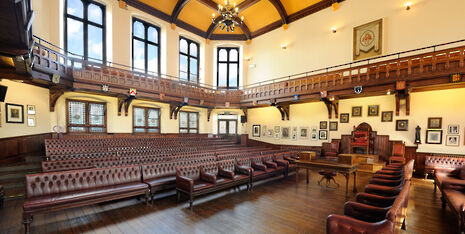
Just because we don’t have to, doesn’t mean we shouldn’t criticise our cultural norms and practices and re-evaluate ourselves. And if we are to do so (if we are to understand ourselves,) we require a more confident move towards experimental arts and culture; representation not only through traditionally-structured and socially-coded verbal signs, but visual imagery and sonic waves, exploring the fuller depths of human experience, understanding and emotion. Linear-textual and formulaic styles of communicating are rendered apparent legitimacy, frankly much like this article, but have inherent limitations in evoking complex meanings, while too generating less flexibility of interpretation – less personal response.
IV: Fixity and uncertainty: distinct avenues of reflection
Young people growing up in rapidly changing urban Poland have none of our fixity in history or surroundings, no such innateness in the rightfulness of a single environment; no well-driven conceptual roads to ride safely teleological vehicles. Our contemporaries in Poland, just as those of ethnic or sexual minorities here, are more forced to question the contingent fiction of their existence; beyond the external, it defines their existence. They lack the stability of assuming the naturalness of their cultural embodiment. And they take to arts and culture to navigate the complex implications of this post-structuralist mentality, creating new meanings and communal identities, entering more thriving and stimulated communities. In fewer words, they may have been shaken, but at least they are not stale, and for the latter, they’re all the better.
Poland has recently seen a burgeoning arts scene comprising not only contemporary art, but avant-garde and experimental music. The LDZ festival in Łódź houses a growing experimental scene in an industrial city; other Polish cities are exploring new avenues of cultural expression through music. From the drone-electronic music of the identity-concealed duo RSS B0YS, who describe themselves as “post-everything”, to the Academy of Movement in Warsaw that started as a protest against communism among university students.
It would be unfair to say there has been no change in Cambridge. The launch of the Motley magazine in Easter term saw a performance from experimental noise musician Language, the project of Cambridge student Henry Page, along with a talk from a marketing director of Getty Images who explored how the marketed visual arts are changing in an increasingly complex manifestation of capitalism. Small societies and collaborations such as Newnham Anonymous Players or Cambridge Experimental do some of the work. The latter temporarily renamed its Facebook page to Cambridge Economics before hosting a bogus talk by the pseudonymous George Moroni on his ‘new business venture,’ Monopoly, Duopoly. To describe this scene, bubbling gently in the background, as ‘lively’ in the same way as student politics or the ADC would be a drastic overstatement; it is not provoking us to question our identities.
Cambridge town has always had a more thriving arts scene than the academic community it contains: from the Arts Picturehouse to Kettles Yard, as the Cambridge Arts Salon to the slightly-out-of-town Wysing Arts Centre, this is the city that raised both Syd Barratt and David Gilmour of Pink Floyd. And there have been exciting recent developments: at Aid and Abet, at the new CB1 development, Jim Finer (former founding member of the Pogues and Artist-in-Residence at the Astrophysics department of the University of Oxford) is exhibiting Supercomputer, an eight-bit functioning computer that operates “through a series of simple mechanical switches powered by the flow of ball bearings under the force of gravity, which activate pitched percussive instruments incorporated in its structure.”
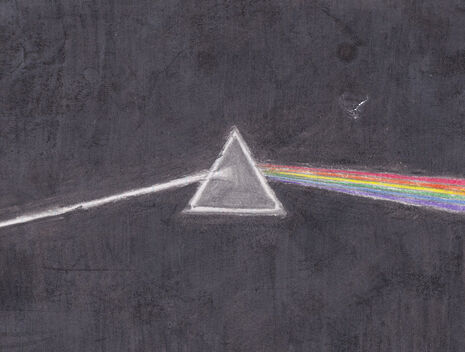
Other universities are also approaching the arts with more critical reflection. At Bath, a project called R.I.P. will be a “moving-image based, experimental portrait about contemporary embalming, reconstruction processes, preparation for burial (on Land and Sea) and cremation” in an attempt to explore Western culture’s relationship with death. The Audiograft Festival at Oxford Brookes, curated by the Sonic Art Research Unit, annually explores interdisciplinary and experimental approaches to music. At Manchester, the active Other Sounds Society explores experimental and alternative music. Indeed, our neighbours at Anglia Ruskin University have gone farther than we have: in October, they will be hosting Art, Language, Location (a contemporary and performance art festival) which includes the Showtime! symposium where Ana Mendes’ performance will be exploring digital identity, a subject of immense relevance to people our age.
At Cambridge, experimental and expressive arts, widely adopted, have the potential to be more strikingly emotive and meaningful for liberation politics than newspaper columns. We have a greater potential to explore the meanings that constitute our everyday existence; the kinds of things we regularly take for granted. We could see a more dynamic nightlife; more engagement in the meaningful, than in empty traditions.
By the end of my time in Poland, I figured we don’t need travel to ‘find ourselves’ unless we are willing to critically reflect on the very things we assume confer purpose to our lives. It is not the size of this city that renders us relatively culturally unresponsive; the symbols and images of Cambridge life provide a historical fixity, transcending and obscuring the broader changes that are consuming the world beyond us. Our outward academic gaze inhibits a critical sense of understanding about ourselves, and where our attitudes and values originate. We could be doing more to address how we find meaning in the rapidly changing world around us, even if our institutional comfort zone and general historical fixity renders it less immediately vital.
We have as much potential as anywhere else: the constantly maintained symbols and values that surround us have the same scope for inversion and reflection as any. The modes of understanding gleaned from the study of the external in academia provide fertile soils for an intellectually stimulating home-grown university arts scene; and it does appear to be slowly growing. Maybe it’ll take a while. If we get there, I suspect we will be a more intellectually satisfied, creative and ambitious community. It’s exciting to imagine what a Cambridge that reflectively responds to its firmly embedded cultural paradigms would look like.
It seems strange to have made such a reflection on a three week visit to a post-Soviet country, having visited a contemporary art gallery and a World War Two museum, but, and pace Kurt Vonnegut, so it goes. So we go.
 Comment / Anti-trans societies won’t make women safer14 November 2025
Comment / Anti-trans societies won’t make women safer14 November 2025 News / Controversial women’s society receives over £13,000 in donations14 November 2025
News / Controversial women’s society receives over £13,000 in donations14 November 2025 News / John’s rakes in £110k in movie moolah14 November 2025
News / John’s rakes in £110k in movie moolah14 November 2025 Music / Three underated evensongs you need to visit14 November 2025
Music / Three underated evensongs you need to visit14 November 2025 Fashion / You smell really boring 13 November 2025
Fashion / You smell really boring 13 November 2025







